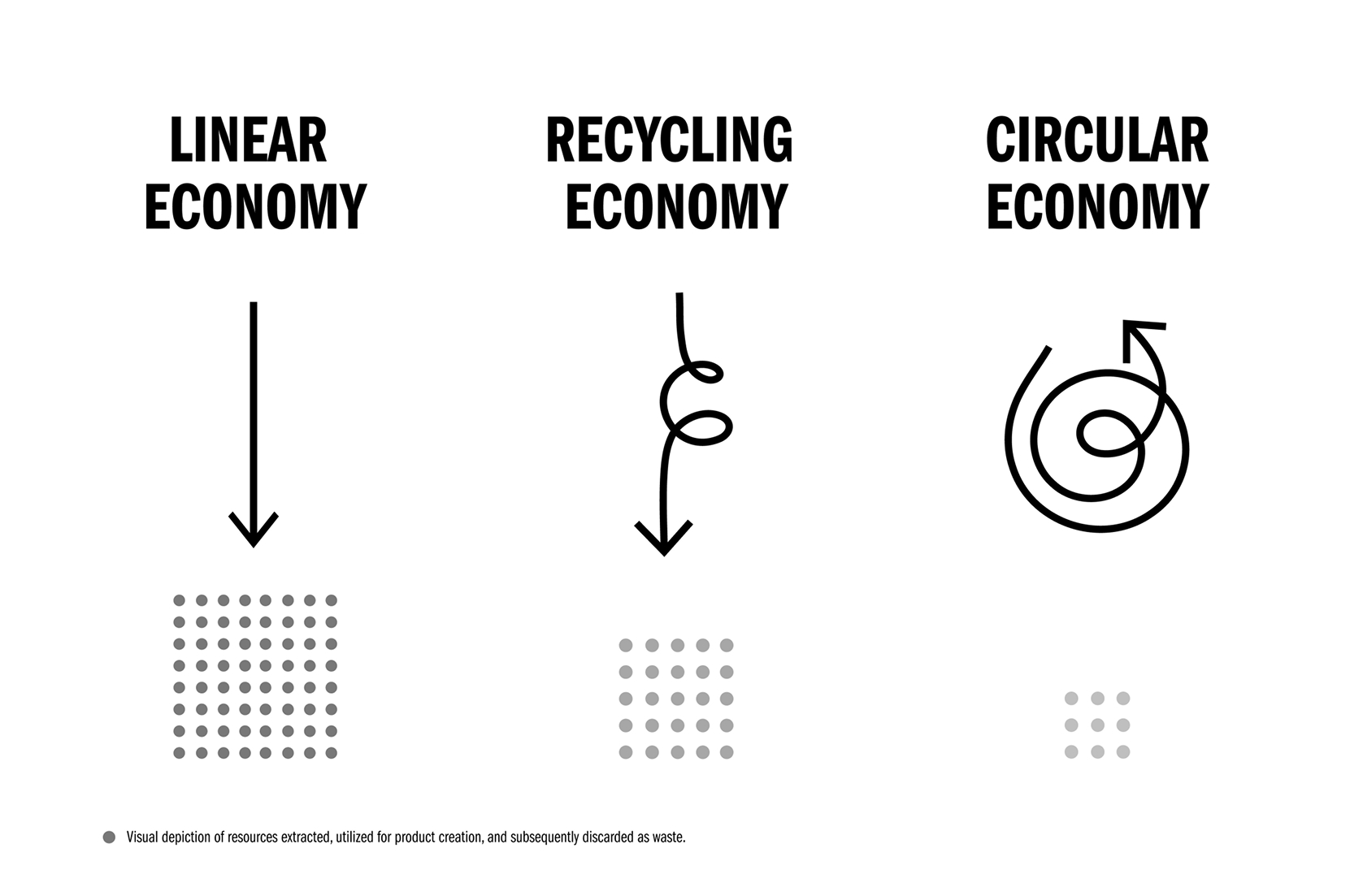
Why Circularity Matters
The fashion industry faces a waste challenge. Nearly 100 million of tons of textiles are discarded every year, with less than 1% recycled into new garments. Circularity isn't just a buzzword, it's a departure from the old take-make-dispose linear model and a move toward a closed-loop system. The goal? Minimize waste and maximize resource utilization by extending the lifespan of our beloved shoes and sports products.
ADIDAS' CIRCULARITY JOURNEY
adidas has been a pioneer in creating products with a circular end-of-life solution, known as ‘Made to Be Remade’ (MTBR). This journey began with the introduction of the Futurecraft. Loop shoe in 2019, a 100% mono-material performance running shoe that was made according to circular design principles. We successfully scaled this proof of concept to a fully commercial MTBR apparel and footwear collection through 2023.

Along the way, we've realized that scaling circularity is complex and requires a robust infrastructure, industry standards and collaboration across the entire value chain. That’s why today, we’re focused on building an ecosystem that connects collectors, sorters, recyclers, suppliers, innovators, and researchers to drive real change.
Our circularity journey has encompassed not just product creation, but also services that extend product life. Over the years, we’ve piloted several circular services, such as sneaker cleaning, rental programs, and take-back initiatives.
See the key milestones in our journey below

Recycled Polyester Commitment
adidas made a commitment to replace 100% of virgin polyester with recycled polyester by the end of 2024, where technically possible.







Our Key Collaborations
Our strategy has evolved into a systemic approach, tackling circularity challenges across our value chain. Building on what we've learned from past initiatives like circular services and the MTBR product collection, we are helping to create the ecosystem needed to make closed-loop solutions a reality. We work with key partners on research projects to develop new recycling technologies, increase the use of certified recycled materials, and create frameworks to drive circularity across the fashion industry. Explore our key partnerships and projects below: '
Waste Management
Our Approach
We are committed to optimizing waste management across our supply chain and own operations, focusing on recycling, reuse, and energy recovery to minimize environmental impact. Our approach centers on refining waste handling processes, upskilling teams for better data accuracy, and leveraging innovative solutions to repurpose waste more effectively. Our goal is to divert 98% of waste from landfills at strategic suppliers (Tier 1 and 2) by 2025, building on the progress already achieved through robust waste management initiatives.
Key Initiatives
Managing Waste in our Supply Chain
To drive waste reduction across our supply chain, we have developed waste management guidelines to improve segregation in manufacturing, ensuring materials are sorted efficiently for recycling or reuse. To further optimize waste diversion, we launched a waste diversion program, which directs non-recyclable waste to waste-to-energy solutions. As part of this initiative, we have expanded co-processing partnerships globally, with a particular focus on regions where waste management infrastructure is still developing. These efforts have contributed to a 96% landfill diversion rate among suppliers enrolled in our environmental program in 2024.
Managing Waste in our Own Operations
Within our own operations, we are strengthening waste management by improving data accuracy and enhancing tracking of different waste streams. We continue to upskill teams to ensure better data collection and reporting, enabling more effective waste management strategies. In 2024, we maintained an 89% waste diversion rate across our administrative offices and distribution centers. These results reflect our ongoing efforts to reduce waste and drive responsible waste management throughout our own facilities.
Circularity
At adidas, we define circularity as maintaining the value of products and materials at their highest level for as long as possible. This aligns with the UN Environment Programme's definition in their report 'Sustainability and Circularity in the Textile Value Chain'.
Circularity
At adidas, we define circularity as maintaining the value of products and materials at their highest level for as long as possible. This aligns with the UN Environment Programme's definition in their report 'Sustainability and Circularity in the Textile Value Chain'.